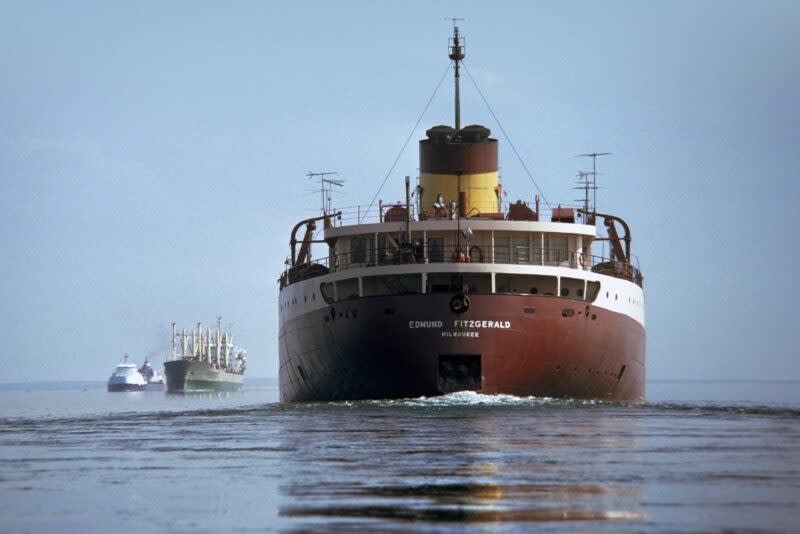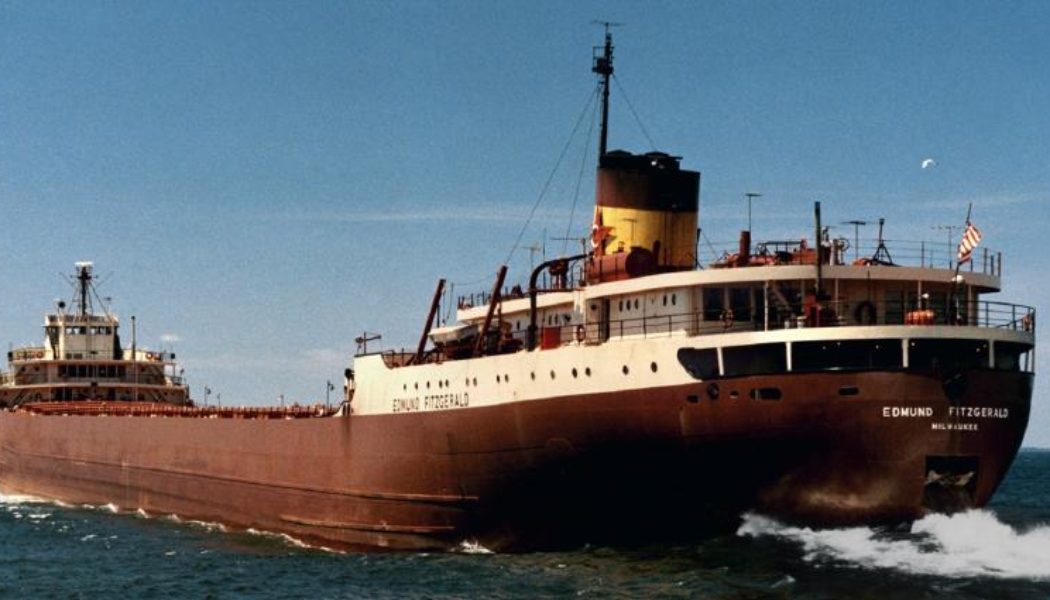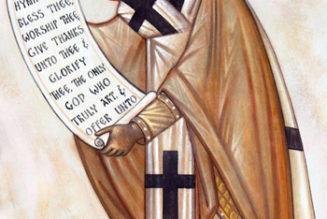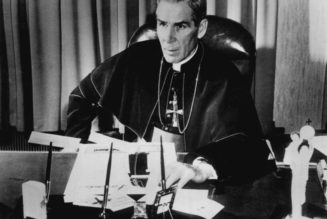
FreightWaves Classics is sponsored by Old Dominion Freight Line — Helping the World Keep Promises. Learn more here.
In the wake of the death of musician Gordon Lightfoot and his famous folk song, “The Wreck of the Edmund Fitzgerald,” FreightWaves Classics is taking a look back at the wreck itself and the historical accuracy of the song.
“The ship was the pride of the American side/ Coming back from some mill in Wisconsin/ As the big freighters go, it was bigger than most/ With a crew and good captain well seasoned/ Concluding some terms with a couple of steel firms/ When they left fully loaded for Cleveland/ And later that night when the ship’s bell rang/ Could it be the north wind they’d been feelin’?”
The lyrics of Lightfoot’s song, which is almost an anthem in the Midwest, tell the story of a cargo ship lost during a storm on Lake Superior. The song was released in 1976 and made it into the top 40 charts fairly quickly.
That was a little odd, according to The New York Times. Typically, pop songs in the mid-1970s were relatively short and focused on love. “The Wreck of the Edmund Fitzgerald” is a 6.5-minute tune about the sinking of a ship and is told with surprising historical accuracy.
FreightWaves Classics covered the famous story of Casey Jones and its appearances in pop culture over the years, most notably a song by the Grateful Dead. However, references to the story in entertainment were often quite different from the man himself and what actually happened.
Lightfoot did not make the same mistake with his tribute to the tragic incident on Lake Superior.
The song was published a year after the tragedy and its lyrics hold true to the real story. The artist was inspired by an article he had read on the sinking of the ship. Family members of the lost crew told S.S. Edmund Fitzgerald Online that Lightfoot often attended memorial services for the ship and crew members and described him as “a good guy,” “a genuine man” and “blessed.”


As for the tragedy itself, the Edmund Fitzgerald set sail on Nov. 9, 1975, with 26,116 tons of taconite pellets of processed iron ore and 29 crew members. It launched from Burlington Northern Railroad Dock No.1 in Superior, Wisconsin, and joined up with another ship, the Arthur M. Anderson, which had departed Two Harbors, Minnesota.
Overseen by the experienced Capt. Ernest M. McSorley, the Edmund Fitzgerald took the lead only 10 to 15 miles from its partner, maintaining radio communication. McSorley and Capt. Bernie Cooper of the Anderson opted to sail toward the north of Lake Superior due to a growing November storm. The thought was that the path would keep both ships protected between Isle Royale and the Keweenaw Peninsula, according to the Great Lakes Shipwreck Museum.
As they journeyed through the lake, the weather worsened, with winds gusts reaching 50 knots and wave heights reaching 12 to 16 feet. The Fitzgerald passed Michipicoten Island on the afternoon of Nov. 10, while the Anderson was just reaching the island.
Cooper received a transmission from McSorley, who was aware his ship had been damaged.
“Anderson, this is the Fitzgerald. I have a fence rail down, two vents lost or damaged, and a list. I’m checking down. Will you stay by me till I get to Whitefish?” Cooper recalled McSorley saying. The plan was to close the gap between the two ships while the Fitzgerald had both pumps running.
The two continued communicating navigational information but nothing about the ship being any worse off. A major wave hit the Anderson at 5:20 p.m., destroying the ship’s starboard lifeboat.
Another wave at 6:55 p.m. engulfed the vessel but the Anderson raised back up and maintained onward. Cooper believes this is likely when the Fitzgerald was lost, he explained in an interview with the Great Lakes Shipwreck Historical Society.
The ship would disappear from radar on and off, likely because the waves were so high they interfered with transmissions. The two captains spoke for the last time at 7:10 p.m., and the Fitzgerald was never heard from again. No distress call was ever sent.
Chilling tapes of radio transmissions between the Coast Guard and Cooper showed the serious concern for the well-being of the Fitzgerald and its crew. Cooper could no longer see lights where they should have been. The two agreed that the Fitzgerald had likely gone down, and a discussion on whether to risk the rough conditions to look for survivors took place.
Some debris was found but no survivors or even remains of crew members ever surfaced.
A U.S. Navy plane discovered a strong contact on its magnetic anomaly detector 17 miles north-northwest of Whitefish Point. But it wasn’t until May 1976 that anything was found.
A cable-controlled undersea recovery vehicle took 43,000 feet of videotape as well as 900 pictures until an upside stern was found 535 feet below Lake Superior’s surface with the name “Edmund Fitzgerald” on the side.
No exact cause of the wreck was discovered. While some believe it was due to a poorly secured hatch, many dispute that as the crew was very experienced and unlikely to make a mistake like that — similar to the story of the missing M.V. Derbyshire.
Due to the destruction of the lifeboats and the fact that a distress call was never sent, it is believed that whatever the reason for the Fitzgerald going down, it likely happened extremely fast.
None of the bodies of the 29 crew members were recovered.
The ship’s 200-pound bell is on display at the Great Lakes Shipwreck Museum at Whitefish Point after it was recovered on July 4, 1995. It was restored by Michigan State University, according to S.S. Edmund Fitzgerald Online to repair it from water damage. Every year on Nov. 10, a bell-ringing ceremony takes place to honor the 29 crew members.


Lightfoot’s lyrics, “The lake, it is said, never gives up her dead/ When the skies of November turn gloomy,” has a very real meaning for those familiar with Lake Superior. Due to extreme cold, bacteria that would normally break down debris or human remains cannot survive. So it is likely that the remains of the crew members are still intact decades later under the surface.
To ward off tourists and maintain respect for the dead, it is illegal under Canadian law to dive to the wreckage of the Edmund Fitzgerald.
FreightWaves Classics articles look at various aspects of the transportation industry’s history. Click here to subscribe to our newsletter!
Have a topic you want me to cover? Email me at bjaekel@freightwaves.com or follow me on Twitter.
The post Was Gordon Lightfoot’s song about the Edmund Fitzgerald accurate? appeared first on FreightWaves.








